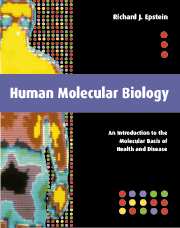Book contents
- Frontmatter
- Contents
- Preface
- Acknowledgements
- Read me first …
- Glossary
- Dedication
- Introduction: A disease for every gene?
- I From molecular biology to human genetics
- II From molecular genetics to human biochemistry
- III From molecular biochemistry to human cell biology
- IV From molecular cell biology to human physiology
- 16 Development
- 17 Metabolism
- 18 Blood
- 19 Immunity
- 20 Neurobiology
- V From molecular physiology to human molecular biology
- Index
20 - Neurobiology
Published online by Cambridge University Press: 01 June 2011
- Frontmatter
- Contents
- Preface
- Acknowledgements
- Read me first …
- Glossary
- Dedication
- Introduction: A disease for every gene?
- I From molecular biology to human genetics
- II From molecular genetics to human biochemistry
- III From molecular biochemistry to human cell biology
- IV From molecular cell biology to human physiology
- 16 Development
- 17 Metabolism
- 18 Blood
- 19 Immunity
- 20 Neurobiology
- V From molecular physiology to human molecular biology
- Index
Summary
The most complex feature of the human body is the brain. Of all the genes in the human genome, as many as 50% may be exclusively expressed in the brain. In this section we consider the molecular basis of brain and nervous system function in health and disease.
Neurotransmitter molecules
Nerve impulses are propagated by membrane depolarization
Life is electric. Neurons, of which we each own approximately 1012, conduct electrical signals to other nerve or muscle cells. To maximize the speed of conduction, certain human neurons are up to a meter long. The signal terminates in a specialized intercellular junction termed a synapse which, when electrically excited, releases neurotransmitter molecules into a cleft and thus chemically activates adjacent neurons. The long (transmitting) part of the nerve is called the axon, whereas the branched (receiving) parts are termed dendrites.
Differences between intracellular and extracellular ionic charge give rise to a transmembrane potential. Neuronal membrane resting potential is usually around –70 mV. Stimuli such as voltage or neurotransmitter release induce the depolarization of neural tissue – that is, conversion of the transmembrane potential to a less negative level such as 0 mV. Membrane depolarization activates voltage-gated sodium channels, leading to an inward flux of sodium ions (Na+) down an electrochemical gradient. Since sodium influx leads to further depolarization, a self-amplifying wave of electrical excitation is created; nerve impulses triggered in this way are termed action potentials.
- Type
- Chapter
- Information
- Human Molecular BiologyAn Introduction to the Molecular Basis of Health and Disease, pp. 491 - 530Publisher: Cambridge University PressPrint publication year: 2002



